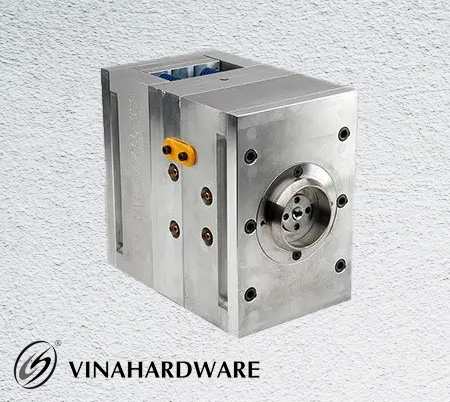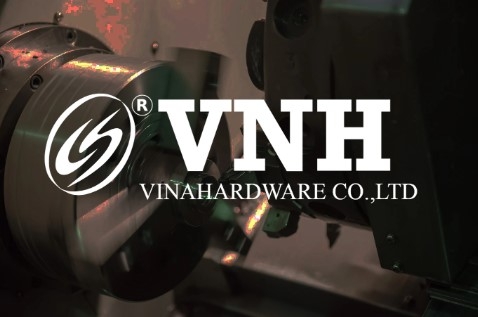What is a stereotype? Application in production and manufacturing
Molds play an important role in the production and fabrication of high-quality products. By using the right materials and state-of-the-art machining processes, molds help create precise products that meet the technical requirements and standards of our customers.
Table of contents
What are stereotypes and types of stereotypes?
A mold is a 3D model or drawing whose shape represents the final product or part during manufacturing and fabrication. It is an important step to create high-quality products and meet the requirements of the market and customers.
In the manufacturing and manufacturing industry, there are different types of molds, each of which meets distinct requirements and production purposes. Common types of molds include:
1. Precision molds: This mold technology is used to create high-precision products such as electronic components, complex machinery, or technical products that require precise measurement.
2. Hot casting mold: This type of mold is used to produce products from molten metal, commonly used in the casting and metallurgical industries.
3. Molds for serving structures: Used in the manufacture of products with complex structures, such as medical devices or mechanical components in aircraft and ships.
4. Embossed mold: This type of mold is used to produce light and complex parts in shipbuilding, aviation, and other floating products.
These types of mold technologies play an important role in ensuring accuracy and meeting the technical requirements of the final product. Thanks to the mold, the production process of product inspection and fabrication becomes efficient and ensures the quality of the final product.
How to create a template
In the production and manufacturing process, mold processing plays a very important role, contributing to creating high-quality products and meeting the requirements of the market and customers.

Technical adjustment on CNC software
The first step is mold design, a sophisticated process that requires considerable attention and understanding of the final product. From previously defined requirements and specifications.
The design engineer will build a 3D mold model with high accuracy. This ensures that the mold will properly reflect the shape and details of the final product, thereby creating the perfect mold design.
After that, mold machining is an important step to create a mold that is accurate and meets technical requirements. CNC (Computer Numerical Control) machining technology and 3D printing are often used to create molds from steel materials to make matching molds. CNC machining uses computers to perform precision machining operations, while 3D printing allows for the creation of complex molds and diverse shapes.

CNC machine software milling process
Next, the mold will be thoroughly tested and adjusted to ensure accuracy and meet technical requirements. The process of testing the function of the mold is necessary to ensure that it works properly and meets the functional requirements of the final product. Polishing molds for smooth and beautiful surfaces is also an important step in this process.
During the molding process, the professional molding company plays a very important role. This company will ensure that the production process goes smoothly and delivers optimal results. Mold manufacturing requires concentration and professionalism from a team of engineers and mold makers, to ensure that the mold is created with precision and meets the highest requirements.
The importance of molds in production and fabrication
Molds play an extremely important and indispensable role in the process of manufacturing and manufacturing products. This is the decisive factor in the quality and performance of the final product and has a great influence on the success of a mold mechanical company.
One of the top importance of mold fabrication is to ensure the accuracy and reliability of the product. Precision molds will produce components or final products that are high-precision and strictly meet technical and skill requirements. This ensures that the product will operate efficiently and meet the quality objectives set.

CNC steel milling with external coolant flow
Not only plays a decisive role in the accuracy of products, molds also help reduce production time and costs. By using a mold that is accurate and meets requirements, the production process becomes more efficient and minimizes errors, thereby reducing production time and costs. This significantly contributes to increasing production efficiency and improving profits for businesses.
The next importance of molds in manufacturing and fabrication is to check the functionality and design of the product. Before proceeding to mass production, the mold allows to test the functionality and performance of the product under real conditions. The necessary adjustments can be made prior to mass production to ensure that the final product will function properly and meet the functional requirements.
In addition, molds help create products with attractive and aesthetically pleasing designs. The surface of the final product can be adjusted and molded polished to obtain a smooth and beautiful surface. This plays an important role in attracting customers and creating credibility with brands and products.
The quality mold inspection process
The mold inspection process plays an important role in ensuring the accuracy, performance, and quality of molds during production and fabrication. The careful and thorough inspection ensures that the mold fully meets the technical standards and quality requirements of the final product.
1. Check accuracy: The first step in the testing process is to measure and check the accuracy of the mold. This includes the use of precision measuring devices to determine the size and shape of molds. Engineers thoroughly inspect each part of the mold to ensure that there are no defects and that the mold components match perfectly.

Thorough operation process makes the mold 100% accurate
2. Function test: After ensuring the accuracy, the mold will be tested for functionality. This usually involves testing molds with materials and environmental conditions similar to those in the manufacturing process. By functional testing, the engineer can ensure that the mold works efficiently and meets the technical requirements of the final product.
3. Material evaluation and surface treatment: Evaluating materials used in molds is an important part of the inspection process. The material must meet the requirements for strength, hardness, and heat resistance. In addition, the inspection procedure also focuses on the surface treatment of the mold. Mold polishing is an important step in ensuring the aesthetics of the final product.

Polished mold surface
4. Check to meet quality requirements: Finally, the mold will be tested to fully meet the quality requirements of the final product. Engineers ensure that the mold meets all set standards, regulations, and specifications.
Incorporating these detailed inspection steps, the mold inspection process ensures that the final product will be created with high precision, stable performance, and satisfying the best quality. Performing this thorough inspection improves the production process and ensures the accuracy of the mold throughout the entire production and fabrication of the product.
Molding cost
Molding cost is an important factor to consider during manufacturing and fabrication. Molding requires no small investment, but it is a worthwhile investment because of the long-term benefits it offers.
Factors that affect the cost of molding include the size and complexity of mold components, the machining technology used, the mold material, the number of molds to be created, and the completion time. Modern machining technologies such as CNC machining and 3D printing can produce molds accurately and quickly but also come with higher costs than traditional machining methods.

Plastic lock latch forming mold for helmets
Some common materials for making molds are steel, aluminum, and plastic. Mold steel materials generally meet the requirements of durability and resistance to high pressure, but also have a higher cost than other materials such as aluminum and plastic. Using the right materials optimizes molding costs while ensuring product quality.
A professional and experienced molding company usually provides a detailed estimate of the molding cost based on the specific requirements of the customer.
Although the cost of precision mold machining can be a big initial investment, it will help optimize the production process and ensure the accuracy and quality of the final product, thereby bringing economic efficiency and profitability to the business in the future.
Conclude
Quality precision mold machining ensures that the final product is manufactured efficiently and meets customer requirements. Although some costs are incurred when creating molds, this investment is worth the money in improving production efficiency and achieving the highest product quality.

Vinahardware (VNH) is one of the few mold-making companies that ensures a smooth production process and delivers optimal results and minimal costs for you.
Mold Testing Process:
Step 1: Check accuracy to ensure that there are no errors
Step 2: Check the functionality to ensure that the template works efficiently
Step 3: Material evaluation and surface treatment: must meet the requirements of strength, hardness, heat resistance, and surface.
Step 4: Check to meet quality requirements: The engineer ensures that the mold meets all set standards, regulations, and specifications.

 Vietnamese
Vietnamese
 English
English
